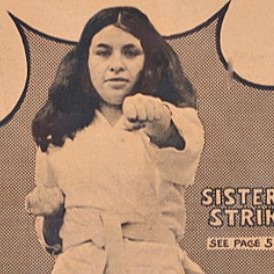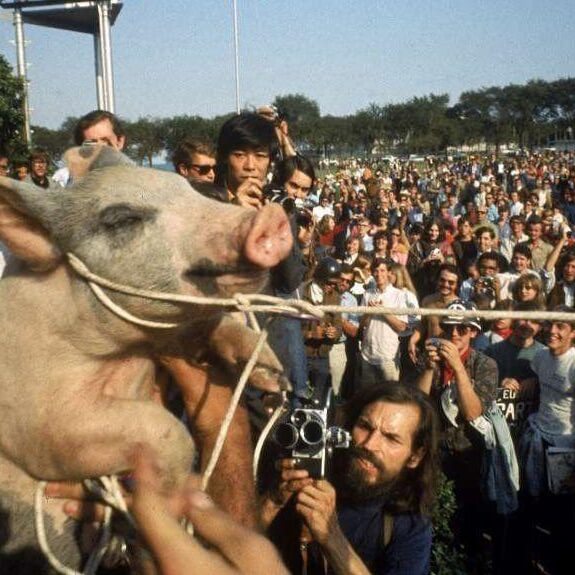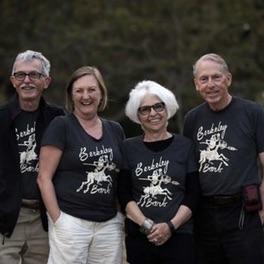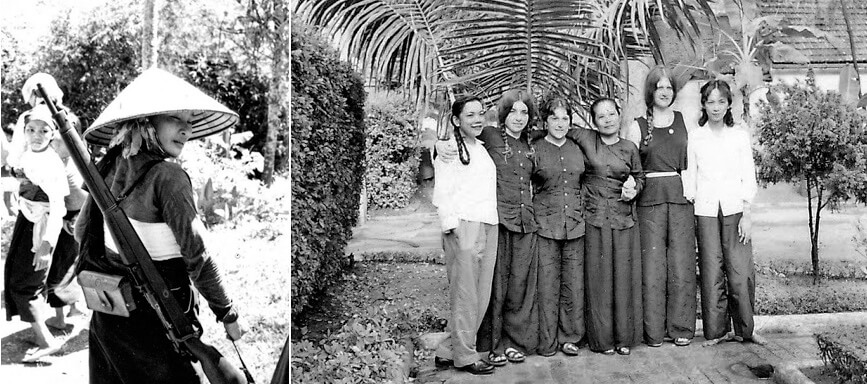



Back to Vietnam
I am one among millions of people around the globe who protested the American war in Viet Nam. I am also one of perhaps 400 people from the United States who visited Viet Nam while the war still raged. I returned this past January 2013, part of a delegation of former peace activists, spouses, partners and supporters. We called ourselves the Hanoi 9, invited to help celebrate the 40th anniversary of the Paris Peace Accords. I had been ridiculously nervous before this second trip, which I put down to fear of losing my illusions. Would this country which once embodied my highest ideals still maintain its moral hegemony in a 21st century world of Starbucks and a Ho Chi Minh City stock exchange?
When I visited the former North Viet Nam in 1970, U.S. troops had been waging war in that country for over seven years. More 14,500 American soldiers had died, close to half a million military personnel had served in combat. Republican Richard Nixon had replaced Democrat Lyndon Johnson as president, yet the threat by Johnson's top general Curtis LeMay that the United States would bomb Viet Nam back into the Stone Age still resonated. Pro-war America labeled Vietnamese as gooks; demonizing combatant and civilian as a slant-eyed, black-pajama'd enemy who fought relentlessly by day and insinuated themselves by night into tunnels, encampments and nightmares of foot soldiers and Presidents alike.
At the same time, public opposition to the war had become a fact of life. Hundreds of thousands of anti-war activists like me idealized the North Vietnamese and their compatriots, the National Liberation Front of South Vietnam as Davids battling the high-tech killing machine of the American Goliath. To my way of thinking, the chant "Ho, Ho, Ho Chi Minh, the NLF is Gonna Win" was not propagandistic wish fulfillment; it was inevitable.
I arrived in Hanoi in May 1970, along with fellow Yippie Nancy Kurshan and Genie Plamondon of the White Panther Party. We were a women's delegation of three. On our first morning, a dilapidated dark green school bus with the number 4709 stenciled on its windshield waited for us on Ngo Quyen Street outside the former colonial French Hotel Metropole, now renamed Reunification. Also waiting was Do Xuan Oanh, the man who had invited us to visit Viet Nam. Oanh, pronounced 'Wine' with a nasal intonation and nnnng at the end, was more than just the go-to person for visiting peace activists. He was a composer, a poet in the romantic Vietnamese/French style, a watercolor artist and a translator into Vietnamese of Mark Twain's Huckleberry Finn. Everyone from the inner core of the U.S. anti-war movement knew him. The writer Susan Sontag who visited Hanoi in 1968 had written: "Oanh had a "personal authority, (he) walks and sits with that charming "American" slouch, and sometimes seems moody or distracted." Oanh's brooding may have stemmed from his personal history. Oanh's wife, the granddaughter of the Chief of Staff of the French government in Indochina, had been arrested by the French in the early 1950s and held at the Maison Central, a concrete building in downtown Hanoi that would become infamous as the Hanoi Hilton. Oanh's wife suffered chronic headaches and fainted whenever she saw a snake. Only in 2013 did I grasp the meaning of Oanh's story when I saw on the wall of the War Remnants Museum in Ho Chi Minh City a depiction of a woman being held down by two burly, bare chested men who were raping her with a snake.
In 1970, Nancy, Genie, Oanh, three Vietnamese guides and I rode our bus south until we crossed the Ham Rong Bridge in Thanh Hoa province. A hole in the bus's rusted floor allowed a view of brown muddy river water rushing mere yards under my feet. Oanh told us the North Vietnamese army moved war materiel by train, oxcart, bicycle and foot across this bridge to the South. U.S. planes had made at least 400 sorties, each one laying down a carpet of bombs. "Every day this bridge is demolished," Oanh explained, "Every night it is rebuilt. The courage of the peasants is a local legend."

Anti-aircraft artillery fighters, Viet Nam 1970. Photo by Judy Gumbo Albert
The instant after I had conjured up a socialist realist image of heroic peasants combating their victim hood by rebuilding a bridge each night, a mountain loomed on my right. One-half of the mountain's top had been sheared away, as if some industrial-sized backhoe had strip-mined giant bites from it. I asked Oanh the meaning of the letters QUYET THANG I saw carved in white chalk into the mountain's top. He replied.
"Determined to win. So American pilots will see this as they fly over."
I did not question why the North Vietnamese believed American pilots could translate this slogan. Then I realized mine was an Americo-centric point of view; the slogan was much more to inspire resistance among peasants undergoing bombing than a deterrent to pilots. By the time the bus stopped, I was feeling no small measure of guilt and remorse, as if I was in some way responsible for the destruction I had witnessed. A woman in a stained lightweight patterned shirt, visibly pregnant, led us through a narrow passage into a low ceilinged cave hollowed into the mountain's core. Bare bulbs attached to wires flickered orange; tons of mountain earth above us tamed Vietnam's humidity. Seven or eight women and men bent over lathes that resembled oversize sewing machines. Oanh said that despite daily bombings this munitions factory had remained in continuous production.
I shivered, not from fear or from my cooling skin but because the air around me felt infused with such resolve I could not help but sop it up like a sponge. I told myself if Oanh and his compatriots could make a life amid such devastation, I could re-make myself. I would act more like my heroes: Mme. Binh, Che Guevara, the Trung Sisters and Emma Goldman. I'd become less self-centered! I'd learn empathy, compassion and determination! I would sacrifice my happiness for the good of others. The vows I made in that factory cave in 1970 in feel Utopian to me now, but at age 27 they changed my understanding of myself and thus my life.

Genie Plamondon, Nancy Kurshan & Judy Gumbo Albert protesting the Viet Nam War outside the U.S. Consulate in Moscow, 1970. Photographer unknown.
Forty years later, Thursday, January 24, 2013, was the second day of Nancy's and my second trip to Hanoi. Instead of holes in the floor, our 2013 bus came equipped with upholstered dark blue seats, wide windows and an up-to date microphone and speaker system. We were to tour the Garco 10 factory on the outskirts of Hanoi. During the war, this factory had produced uniforms for the North Vietnamese Army. Today it manufactures shirts and suits for men, plus a line of clothing for women and children for companies like Pierre Cardin, J.C. Penney, Perry Ellis, Liz Claiborne, Tommy Hilfiger, DKNY and Target.
Our delegation climbed three flights of stairs, past a green sign promoting compact fluorescent bulbs, solar power and recycling. We waited in a conference room whose major difference between it and any American corporate office appeared to be its bust of Ho Chi Minh. Than Duc Viet, Garco 10's Director recited her list of Garco 10 accomplishments: employees who own stock shares which their children can inherit; pre-school for worker's children; on-site dental care; 11,000 workers with wages of $200 a month, well above that made by most Vietnamese factory workers. To me this factory felt like a 21st century embodiment of Pete Seeger's Taking Union: "shorter hours, better working conditions, vacations with pay, take your kids to the seashore." Still, I had to wonder: how many workers in modern Viet Nam have access to such perks?
I'd studied up on the Vietnamese economy before my trip. I knew that the Vietnamese government promulgates what they call a "socialist-oriented market economy." The day after I visited Garco 10, I had an opportunity to ask Deputy Director Sung of the Vietnamese government's Americas Department, "What does the phrase socialist-oriented market economy mean?" In a reply that was perhaps more candid than the usual diplomatic "open and frank" discussion, I understood him to say he hopes that Viet Nam will maintain socialist ideals in a way that allows it to function in global capital markets and, at the same time, avoid the systemic economic collapse of the former Soviet Union. Director Sung did not allude directly to the enormous political pressures being brought to bear on Viet Nam by market forces, except to explain that "political and economic stability is a high priority so countries can put their trust in us. If we fail," he concluded, "it will be our fault." I am a child of Communist Party parents. I long ago renounced what I experienced as Communist authoritarianism for Yippie anarchism, yet I came away thinking that if Viet Nam's state-owned and private enterprises can figure out how to extract surplus value (i.e. profit) from their workers while at the same time achieving workers' control of the means of production, more power to them.
All the photos I took in 1970's Viet Nam are black and white, yet the vivid greens and earth tones of my memory are closer to my actual experience. One photo I have from Thanh Hoa province shows eight women lined up in formation, four abreast. They are a platoon of artillery gunners. Each wears a pith helmet and those ubiquitous black silk pants. They appear as short as I am and look in their mid-twenties. One is barefoot; the others wore black sandals recycled from used rubber tires. A second photo shows me in a tie-dye tank top, hair braided to ward off the heat, seated in a Russian anti-aircraft gun mounted on what looks like a two-wheeled tractor spattered with mud. Jane Fonda had her picture taken in this same model gun when she visited North Vietnam two years after I did. Jane's enemies used the photo to brand her a traitor; the record of an act Jane says she now regrets. Her friends have told me the fallout from that photo made the task of winning mainstream Americans to the anti-war cause more difficult. I have never regretted looking through those gun sights, but I do remember feeling like a fraud. My life was one of privilege. How could I compare myself to women for whom making it through one day meant shooting a gun mounted on a tractor at sophisticated airplanes out of whose belly fell canisters filled with shrapnel, white phosphorous or napalm jelly engineered to stick to clothes and skin?
The barefoot soldier handed me a gray-green half ball made of metal as if it was detritus of little value. It was round, hollow, two and a quarter inches wide, ¾ inch deep with a jagged hole in one side as if a single tear had burned like acid through its metal casing. It was the exploded remnant of a U.S. pellet bomb or "pineapple." It had once contained 250 steel pellets, now dispersed, except for a few still caught like pomegranate seeds inside its metal skin. Between 1964-71 the US military had ordered at least 37 million such pellet bombs or pineapples. Pineapples were housed inside "mother" bombs dropped by B-52 Stratofortress bombers. A single B52 could drop 1000 pineapples over a 400 square yard area.
War cannot help but leave its remnants behind; the Viet Nam I visited in 2103 remains polluted by bombs dropped between 1965 and 1973 in over 126,600 sorties made by B52 bombers. At the Mine Action Center in Quang Tri province, once carpeted by 3,000 bombs per square kilometer, I encountered display case after display case of exploded pellet bombs like mine; whose unexploded cousins remain buried, only to rise up from the soil, unbidden and undead, to kill or maim children who mistake the bombs for playthings. Hand held hoes are available for clean-up, as are metal detectors, supplemented by bright red signs warning: Danger! with a graphic of a skull and crossed bones.
During the war, at the former U.S. airbase at Da Nang, American G.I's offloaded barrels of the toxic herbicide Agent Orange; today the airbase is the most contaminated area in the world. I met Walt, a bearded former marine with orange hard hat and wire-rimmed glasses now a United States Agency for International Development tech hired to help clean up the airbase. He said 100,000 cubic meters of earth are being dug down ten feet; then placed in concrete boxes, like a mountain of giant Legos. The soil will be heated to 300 then to 700 degrees, changing the chemical nature of Agent Orange and, Walt claimed, rendering it non-toxic, usable for roads. Although despising protestors when he was in the Marines, Walt acknowledged he would not want to grow anything in this soil. Or breathe in its fumes.
I learned a simple formula: dioxin is a byproduct of Agent Orange. Dioxin adheres to earth. Contaminated soil gets incorporated into grasses on which cattle graze or into ponds and streams where ducks swim that are later eaten. The consequences to human health are not so simple: lung cancer, diabetes, lymphoma, leukemia, kidney disease and mental disorders. I stood beside a creek and felt my mouth burn. Could this be real, I asked myself, or just a hypochondriac over-reaction?
After leaving the Da Nang airbase we passed rice paddies that reminded me of chessboards of green squares. In many, three-sided boxes that looked like brightly painted dollhouses were mounted on poles; traditional markers for graves of family members to keep them close to their fields. At Quang Tri's Cemetery of Fallen Combatants, white gravestones each with gold star emblazoned on a red circle brought to my mind a poem from World War I I'd memorized in grade school: >We are the Dead. Short days ago we lived, felt dawn, saw sunset glow, loved and were loved but now we lie in Flander's fields. I became a widow in 2006. I've been best friends with inconsolable grief. In 2013 and now remarried, I wandered the cemetery remembering the 3,000,000 Vietnamese and 58,000 U. S. soldiers who died. But even the graveyards of Quang Tri could not prepare me a classroom at Friendship Village, one of many such complexes throughout Viet Nam. Strung on a blue banner across the front of a classroom into which we were ushered, these words appeared in capital letters,
WELCOME
AMERICAN FRIENDS/PEACE ACTIVISTS
TO DA NANG CENTER SUPPORTING FOR AGENT ORANGE VICTIMS AND UNFORTUNATED CHILDREN.
Da Nang 31/01/2013
This trip had been fast paced but now time slowed. I hate the word victim but in this case it felt apt. The Center director, a man half my size, legs bent and body contorted, informed our group that 1,400 intellectually disabled children lived in the Da Nang area. I sat among them: girls and boys, faces and backs of heads flat, eyes slanted in that recognizable way, some with feet deformed and four toes and one little girl, her body perfect but she was at best three feet tall. This girl appeared ageless, with an expression under her straight brown hair and pixie face of such unbearable sadness it broke my heart. The other children laughed and clapped, she did not join in or smile, as if she understood she had been cheated of a normal life by toxic chemicals leeched into and poisoning the soil of her community two generations before she had been born. I believe, although I have no evidence of this, that this girl realized whatever chance at normality she may have possessed had she been born into another body had been cruelly taken from her by military decisions made in the United States forty years ago. I was unable to join the raucous Gangnab style dance the other children and my compatriots enjoyed. The girl disappeared, as if unable to tolerate the fun-loving intensity disabled children can muster. I am responsible for the tragedy of this life, I told myself. Yet I felt powerless to act.

Judy and Nancy at the Ho Chi Minh Mauseoleum, Hanoi, 2013. Photo by Steve Whitman.
Like his male compatriots, Oanh had dressed for our farewell celebration in June of 1970 in his usual gray pants and white shirt; our women guides wore carefully preserved au dai's of faded reds and blues. I knew the population suffered war-related food shortages yet the banquet in our honor felt sumptuous; a traditional gesture of gratitude. Spring rolls fried a delicate brown, bright red prawns, steaming bowls of Pho served concurrently with fish braised in brown sauce plus a beige vegetable cut in fantastical shapes that gave off what was to me an alien scent. A dessert of ripe yellow pineapple came accompanied by slices of fruit, its white flesh speckled with tiny black seeds as if an ironic Mother Nature had created a pellet bomb of peace and friendship just for us.
I also knew my job when I returned to the United States would be to bring back what I'd learned about the humanitarian consequences of war. But how to do that? I was especially bothered by how I would negotiate the factionalism and identity politics that were creating necessary but to my mind unfortunate splits within peace movement ranks. As if anticipating my confusion, Oanh answered in his goodbye speech, telling Nancy, Genie and I to keep the long term view in mind. He said,
"Be good to friends who are good to you; also be good to friends who are bad to you, for only friends will go with you on the long road to revolution."
To this day I try to follow Oanh's advice; the first is easy, it's the second part remains a challenge. Oanh went on to recount a story told to him by his father. "You must not wait until the score is achieved to know who is the real hero," Oanh's father had said. Oanh had repeated this sentence when he buried his father and, as he put it, "pledged to look at life with the same eye." He concluded, "I would not wait until revolution is achieved in America to know that you represent the future." In 1970, I could not have asked for a more inspirational farewell.
On Friday, January 21, 2013, the 40th anniversary of the Paris Peace Accords, Nancy and I emerged from our bus to the music of a military band, then were guided past an honor guard, up a red carpet into a vast auditorium. Across the aisle from me sat a group of older men in white uniforms, all gray haired and balding, plus one woman in green military garb. Medals, ribbons and red stars gleamed on every chest. An impromptu peace ambassador from the former Woodstock Nation, I made my way down their row and shook each hand. "Thank you, thank you," I said in English. They beamed with delight.
Mme. Nguyen Thi Binh and a frail diplomat named Van Loi were escorted to an oversized stage, where they stood behind by red velvet curtains on which hung a giant gold star, hammer and sickle. A gold bust of Ho Chi Minh, three times their size gazed down. As a 'red diaper baby,' I understood the symbolism: If Ho's bust resembled a Hollywood Oscar, the Heroic Award of Armed Forces Mme. Binh and Van Loi received would be equivalent to a Lifetime Achievement Award. At 86, Mme Binh is now the only living Vietnamese signer of the Paris Peace Accords. She had been foreign minister of the Provisional Revolutionary Government of South Viet Nam, headed the PRG delegation at the Paris Peace Accords, had been a leader of the Viet Nam Women's Union and my personal hero.

Judy and Mme Binh, 2013. Photo by Nancy Kurshan.
To the accompaniment of a classical orchestra, images began to flash on a giant screen: young Ho with wispy beard; destroyed buildings and pagodas surrounded by metal remnants of B52 bombers; peasants in rubber tire sandals guiding war materiel down the Ho Chi Minh trail; Mme Binh signing the Accords; devastation caused by Nixon's subsequent carpet bombing of Cambodia and Laos, and, to conclude, victorious tanks from the North entering Saigon. As the film unfolded, dancers filled the stage like red, blue and yellow butterflies. The music slowed. A line of young women and men appeared; they were not Vietnamese, they were dressed as hippies, one of whom played an air guitar as if he was Bob Dylan. The group began to sing, in English, the international anti-war standard, 'Ho Ho Ho Chi Minh. Such public recognition of our movement's efforts made me understand my job in 2013: to convey as best I could the thanks and gratitude of the Vietnamese government to everyone who protested the American war in Viet Nam.
After the ceremony, I attended a banquet. As did Mme Binh. Her walk was steady; her eyes shone behind her glasses. I had carried with me from the United States a black and white photograph of a women's anti-war demonstration at the 1972 Republican Convention in Miami. Women In Revolt, Sisters Unite! I'm in the front line of demonstrators, pounding out a militant beat on a wooden drum I'd slung over my shoulder. To my left is a woman later identified as a police agent. To my right is Patty Oldenberg (then wife of the artist Claus Oldenberg.) Patty wears what I once called the Mme. Binh Livlikker t-shirt. Above a graphic of Mme. Binh's head, the word 'LiveLikeHer' appears: an outcome of a volunteer designer squishing the words 'Live Like Her' into a single silkscreened slogan. It may be a cliche but as I approached Mme. Binh's table, I changed into that young woman in 1970 in the presence of my hero. I handed Mme. Binh the photograph, and told her that my female anti-war compatriots and I had done our best to live like her. I said, "Thank you for all you have done."
"And we will continue to do it," she replied, then squeezed my hand.
A socialist-oriented market economy with Starbucks and a Ho Chi Minh City stock exchange may not be the type of independence I'd envisaged for Viet Nam when I first demonstrated against the war. Still, if I follow the example set by Mme. Binh, I will hang onto my ideals of the Vietnamese as revolutionary heroes, yet stay open to whatever future they determine for themselves.
Judy Gumbo Albert who was recently identified in the San Francisco Chronicle as "one of Berkeley's well-known traditional rabble-rousers," published her award-winning piece "Bugged" about being surveilled by the FBI in The Times They Were A-Changing: Women Remember the 60's and 70's, She Writes Press (2013). Judy was an original member of the Yippies, co-authored The Sixties Papers: Documents of a Rebellious Decade (1984) with her late husband Stew Albert, contributed to Sean Stewart's On the Ground, P.M. Press (2011), has written for Counterpunch Magazine and Rag Blog and is currently completing Yippie Girl, a memoir in progress about love and conflict among the romantic revolutionaries of the late 1960s.
Sources:
Susan Sontag: Trip to Hanoi, Fararr, Strous and Giroux, New York 1968
Nick Turse: Kill Anything That Moves: The Real American War in Viet Nam, Henry Hold and Company, New York 2013
Susan Hammond, War Legacies Project www.warlegacies.org




